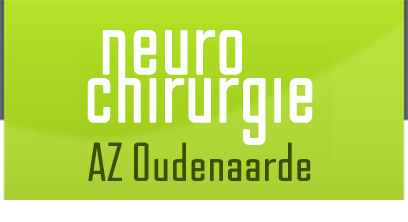Back pain & neck pain
Chronic lower back pain
Chronic lower back pain is the most common form of chronic pain. ‘Chronic' means that the patient suffers from it every day for at least three months. Only in very specific cases, neurosurgery is the preferred solution for these complaints.
Searching for the cause and red flags
If a patient complains about chronic lower back pain, the physician will in first instance search for ‘red flags' in the patient's medical condition. These red flags (determining factors or indications) may indicate an underlying cause for the pain. In such cases, an additional diagnose is required. Examples of red flags:
- the age at which the symptoms start (under 20 or over 55)
- permanent progressive, non-mechanical pain (no improvement when resting)
- chest pain
- prior history of a malignant tumour
- long-term use of cortisone
- drug addiction, suppression of immune system, HIV
- general exhaustion
- unexplainable weight loss
- neurological disorders:
- radiating pain in foot
- signs of paralysis
- structural abnormalities (scoliosis)
If a red flag is discovered, there may be an underlying injury that needs specific treatment. A few examples:
- herniated disc
- lytic spondylolisthesis
- Degenerative spondylolisthesis
- lumbar canal stenosis
- osteoporotic spinal fractures
Chronic back pain caused by wear in intervertebral discs
Chronic back pain complaints may also be caused by early wear in one or more intervertebral discs.
These intervertebral discs wear out when ageing. This may cause instability, resulting in pain. Usually, this pain is tolerable as long as the back is not subjected to a heavy load.
Preferred treatments for such patients are physiotherapy, pain medication and various infiltrations (e.g. facet infiltrations). In severe cases, it may be necessary to secure the vertebrae onto one another.
This is done by removing the intervertebral disc and replacing it by a cage implant in which bone is inserted so that the vertebrae can grow together. To protect this bone formation, the discs are fixed with screws and rods. This procedure can be performed from the back but also through the belly (ALIF).
In this way, the affected and painful intervertebral disc is removed and pinched nerves are released so that the pain diminishes or disappears altogether.
In such procedures, the insertion of screws and/or plates is closely monitored by way of intraoperative imaging with radioscopic devices or with the O-arm. This innovative device allows to make very accurate CT-images during the actual operation.
